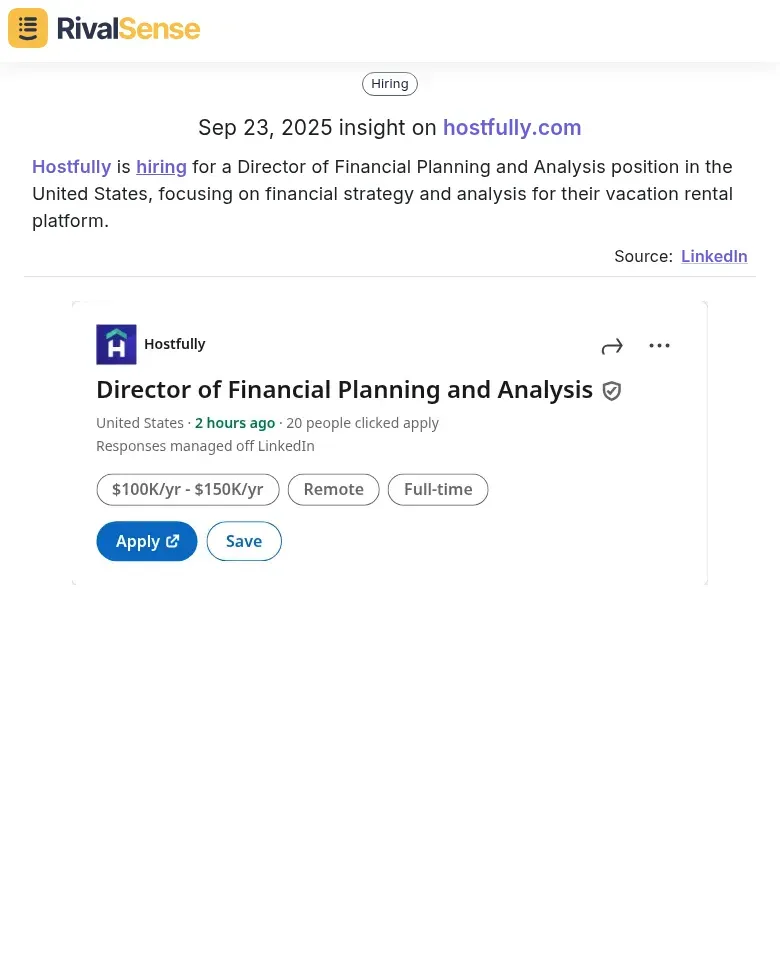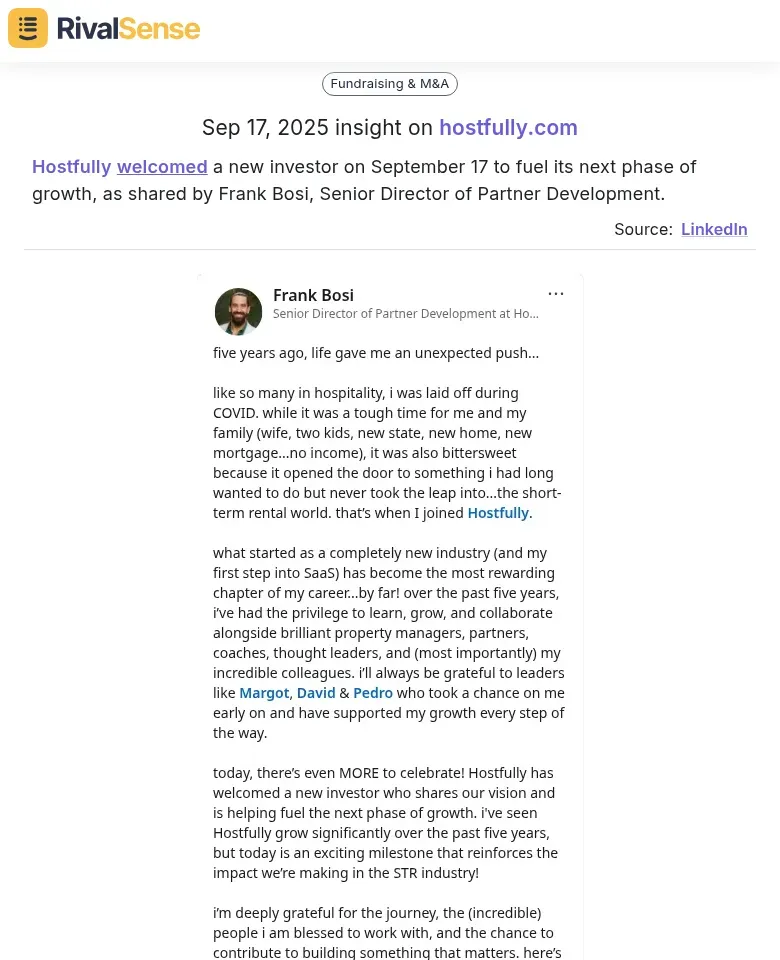How to Outsmart Vacation Rental Software Competitors with Feature Analysis
Introduction: The Strategic Importance of Feature Analysis in Vacation Rental Software
In the competitive vacation rental software market, feature analysis transforms raw competitor data into strategic intelligence. By systematically evaluating rival platforms, you gain insights into market gaps, customer preferences, and emerging trends. Start with a feature checklist: compare booking engines, channel management, pricing tools, and guest communication capabilities. Identify key differentiators—like dynamic pricing algorithms or integrated cleaning management—that drive market leadership. For example, if competitors prioritize mobile-first experiences, anticipate rising customer expectations for on-the-go management. Use these insights to refine your product roadmap, focusing on underserved features or superior implementations. Practical steps: 1) Map competitor feature sets quarterly, 2) Analyze user reviews for pain points and praises, 3) Test competitor demos to experience workflows firsthand. This proactive approach helps you outsmart rivals by anticipating shifts, from AI-driven automation to sustainability features, ensuring your software stays ahead in a dynamic industry.
🎯 Analyzing Competitor Growth Strategies and Market Positioning
Understanding how competitors grow can reveal opportunities and threats in the market. To outsmart vacation rental software competitors, analyze their growth strategies through three key channels.
First, monitor industry events and conferences where competitors present—these reveal expansion plans and new market entries. Track their speaking engagements and booth presence at major events like VRMA and Phocuswright to anticipate strategic moves. For instance, RivalSense recently tracked that Hostfully will exhibit at the Vacation Rental World Summit on October 30-31 in Rome.  This type of insight is valuable because it helps you anticipate competitor moves and plan your own event strategies accordingly.
This type of insight is valuable because it helps you anticipate competitor moves and plan your own event strategies accordingly.
Second, analyze hiring patterns on LinkedIn and job boards. A surge in engineering roles suggests product development focus, while sales hires indicate market expansion. Look for specialized positions like 'Head of European Operations' to identify geographic targeting. For example, RivalSense identified that Hostfully is hiring for a Director of Financial Planning and Analysis position in the United States, focusing on financial strategy and analysis for their vacation rental platform.  Tracking hiring patterns like this can indicate shifts in strategic focus, such as expanding into new markets or strengthening financial operations.
Tracking hiring patterns like this can indicate shifts in strategic focus, such as expanding into new markets or strengthening financial operations.
Third, scrutinize funding rounds and investor activity. Recent Series B funding often signals aggressive growth phases, while strategic investors from adjacent industries (like property management) may indicate partnership or integration plans. Use tools like Crunchbase to track these patterns. RivalSense provided an insight where Hostfully welcomed a new investor on September 17 to fuel its next phase of growth, as shared by Frank Bosi, Senior Director of Partner Development.  Insights into funding activities help you gauge competitor growth phases and potential market expansions.
Insights into funding activities help you gauge competitor growth phases and potential market expansions.
Practical steps:
- 📅 Create a competitor event calendar with key conference dates
- 👥 Set up job alert notifications for competitor companies
- 💰 Maintain a funding tracker with round sizes and investor profiles
- 🔄 Quarterly review: Cross-reference hiring spikes with product launches
- 💡 Tip: Focus on executive hires—they often precede major strategic shifts
🔍 Core Feature Categories for Competitive Analysis
To outsmart vacation rental software competitors, focus on three core feature categories. This systematic approach ensures you cover all critical aspects of the software and identify areas for improvement.
Here’s a quick overview of the key categories and elements to analyze:
| Category | Key Elements to Analyze |
|---|---|
| Property Management System | API availability, third-party integrations, data synchronization |
| Channel Management | Real-time updates, overbooking prevention, multi-platform sync |
| Automation Tools | Guest communication, task management, response times and customization |
First, evaluate property management system capabilities and integration depth. Look beyond basic listing management—assess if competitors integrate with smart locks, cleaning services, and dynamic pricing tools. Create a checklist: API availability, third-party app ecosystem, and data synchronization across platforms.
Second, assess channel management features and multi-platform synchronization. Track how competitors sync availability, pricing, and bookings across Airbnb, Vrbo, and direct booking sites. Tip: Test for real-time updates and overbooking prevention—delays here can cost bookings.
Third, compare automation tools for guest communication and operational efficiency. Analyze automated messaging for check-ins, reviews, and support, plus tools for task management like cleaning schedules. Practical step: Sign up for competitor trials to gauge response times and customization options.
By systematically analyzing these areas, you’ll identify gaps to exploit, such as superior integrations or faster sync speeds, giving your software a competitive edge.
💡 Advanced Feature Analysis: Differentiators and Innovation
To outsmart vacation rental software competitors, focus on feature analysis that reveals true differentiators. By digging deeper, you can uncover innovations that set you apart and drive market leadership.
Start by identifying unique value propositions like digital guidebooks and guest experience tools—these enhance guest satisfaction and reduce manual work. For example, analyze if competitors offer customizable guidebooks with local recommendations or automated check-in processes.
Next, assess AI-powered features and automation capabilities. Look for predictive pricing, smart messaging, and maintenance alerts that save time and boost revenue. A practical step: create a checklist comparing AI integration depth—does the software learn from guest behavior to optimize operations?
Finally, evaluate pricing models and transparency. Transparent, tiered pricing without hidden fees can be a strategic edge. Tip: Map competitors’ pricing against features offered; highlight gaps where you can offer better value. By systematically analyzing these areas, you’ll uncover innovation opportunities to stay ahead.
🚀 Implementation and Action: Turning Analysis into Strategy
Once you’ve analyzed competitor features, transform insights into action. This step is crucial for turning data into actionable strategies that drive growth and outmaneuver rivals.
Start with a feature gap analysis: list all competitor features, categorize them (core, differentiators, nice-to-haves), and identify gaps where you can innovate or improve. For example, if rivals lack AI-powered booking assistants, that’s a market opportunity.
Next, develop competitive response strategies. If a competitor launches a new feature, decide whether to match, ignore, or leapfrog it—focus on moves that align with your brand and customer needs.
Finally, build a feature roadmap: prioritize gaps based on impact (e.g., revenue boost) and effort, set timelines, and communicate how each feature strengthens your market position.
Tips:
- ✅ Use a SWOT matrix for clarity
- ✅ Involve customer feedback in prioritization
- ✅ Regularly update your analysis to stay agile
This turns data into a strategic edge that fuels long-term success.
📈 Conclusion: Sustaining Competitive Advantage Through Continuous Analysis
In the dynamic vacation rental software market, sustaining competitive advantage requires continuous feature analysis. Establishing a routine for monitoring and adapting is key to staying ahead and responding to market shifts effectively.
Establish ongoing monitoring systems by setting up automated alerts for competitor product updates, conducting quarterly competitive audits, and tracking feature adoption metrics. Integrate these insights into your product roadmap by prioritizing features that address market gaps while differentiating your unique value proposition. For marketing, highlight your competitive advantages through targeted messaging that showcases superior functionality. Measure impact by tracking key metrics: market share growth, customer acquisition costs, and feature usage rates.
Create a simple checklist:
- ✅ Monitor 3-5 key competitors monthly
- ✅ Document feature gaps quarterly
- ✅ Align 20% of development resources to competitive responses
- ✅ Test messaging around new features
Remember: competitive intelligence isn’t a one-time project but an ongoing discipline that informs strategic decisions across product, marketing, and sales functions.
To streamline your competitor tracking and get actionable insights like the examples shared, try out RivalSense for free at https://rivalsense.co/ and get your first competitor report today!
📚 Read more
👉 Unlocking Growth Through Competitive Partnership Intelligence
👉 Leveraging Competitor Event Participation for Strategic Insights
👉 How to Track Competitor Podcasts for Market Dominance in Heavy Equipment Repair
